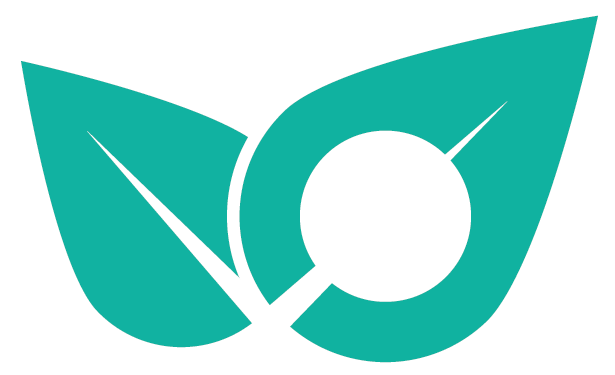
Project Manager(s):
Moshe Ben-Akiva , Jessika Trancik (IDSS-MIT), Carlos Lima Azevedo (DTU/MIT)
Sponsor:
ARPA-E: Advanced Research Projects Agency-Energy (https://arpa-e.energy.gov/)
Team:
Moshe Ben-Akiva , Jessika Trancik (IDSS-MIT), Carlos Lima Azevedo (DTU/MIT), Song Gao (UMass), Eleni Christofa (UMass), Fang Zhao, Bilge Atasoy, Ravi Seshadri, Arun Prakash, Hyoshin Park (UMass), Kakali Basak, Mazen Danaf, Xiang Song, Zach Needell, Wei Wei, Katerina Deliali (UMass), Rounaq Basu ,Isabel Viegas, Ajinkya Ghorpade, Marco Miotti (IDSS-MIT), Nicholas Fournier (UMass), Jamar Brooks (EECS-MIT), Dalitso Banda (EECS-MIT), David Sukhin (EECS-MIT), Akshay Padmanabha (EECS-MIT) , Eunice Kim, Katie Rosa
with support from Singapore’s SimMobility, FMS and DynaMIT teams.
Start Date:
December 2015
Scheduled End Date:
Research Highlights:
- Develop an open-source agent-based simulator for multi-modal transportation networks, vehicle energy performance, and a wide set of traveler behaviors including reaction to incentives.
- Develop a simulation-based system optimization framework that predicts traffic, energy consumption and the effect of different incentive strategies in real-time.
- Energy saving choices “pay out” at different token rates according to real-time system based optimization and personalized reward optimization.
- A personalized trip menu with real-time information and incentives integrated with a travel diary and an electronic mobility market in a smartphone app.
Abstract:
The ITSLab together with the TrancikLab (MIT) and the University of Massachusetts at Amherst (UMass) will develop and test its "Sustainable Travel Incentives with Prediction, Optimization and Personalization" (Tripod), a system that could incentivize travelers to pursue specific routes, modes of travel, departure times, ride sharing, trip making, and driving styles in order to reduce energy use. Tripod relies on an app-based travel incentive tool designed to influence users' travel choices by offering them real-time information and rewards. MIT researchers are using an open-source simulation platform, SimMobility, and an energy model, TripEnergy, to test Tripod. The system model, which simulates the Greater Boston area, will be able to dynamically measure energy use as changes to the network and travelers' behavior occur. The team's system model will be linked with a control architecture that will evaluate energy savings and traveler satisfaction with different incentive structures. The control architecture will present users with personalized options via a smartphone app, and it will include a reward points system to incentivize users to adopt energy-efficient travel options. Reward points, or tokens, could be redeemed for prizes or discounts at participating vendors, or could be transferred amongst users in a social network.
Description:
Inefficiency in transportation systems is an issue affecting millions of people every day. It causes increased use of energy and pollution, as well as economic loss, stress, and road rage. State and local transportation departments are highly motivated to manage transportation in a more cost- effective manner, but lack the tools to do so. Tripod proposes a way to influence the individual’s daily travel decisions that contribute most significantly to energy inefficiencies, by offering information and incentives for changing that behavior and improving system performance.
The proposed incentives scheme straightforward: travelers would be presented with personalized menus via a smartphone app, or a car’s on-board computer, and be offered “tokens” for a variety of energy-reducing travel options in terms of: route, mode, departure time, ride sharing, driving style and actual trip making. Such options will be presented with information to help travelers understand the energy and emissions consequences of their choices. By accepting and performing a specific travel option, a traveler would earn tokens that depend on the system-wide energy savings he or she creates, encouraging them to consider not only their own energy cost, but also the impact of their choice on the system. Tokens could then be redeemed for services at participating vendors and transportation agencies, or transferred between users.
Little new infrastructure would need to be created – millions of travelers already have smartphones capable of meeting the needs of the system. The appropriate number of tokens to reward users for different actions will be determined with a real-time simulation of a city’s transportation network, which would efficiently predict potential transportation conditions over the next rolling horizon (e.g.: 1h), and determine an optimal way of rewarding travelers. An incentive-based program using information technology can be implemented for a fraction of the cost of infrastructure-heavy projects, and at little or no cost to local, state and federal government.
The project we propose to test this approach comprises a control architecture (CA) and a system model (SM). The CA encompasses the travel information and token system described above, as well as the real-time transportation network simulation needed to predict travel conditions, energy performance and determine the optimal token rewards for users’ actions. The SM is a high-fidelity simulation that serves as the laboratory, representing the real world for the purposes of development and testing, ultimately to be replaced by actual deployment.

Figure 1 – Sustainable Travel Incentives with Prediction, Optimization and Personalization
The Control Architecture (CA) relies on two integrated components: the System Optimization and the User Experience. The System Optimization builds on a state-of-the-art dynamic traffic prediction model, DynaMIT [1], which provides real-time predictions to how users respond to provided information, and on TripEnergy [2], a model that estimates the energy and emission impacts of travel. DynaMIT actually takes into account how users will respond to this information in forming a prediction, so that actual outcomes are consistent with what users expect if they respond to the new information. TripEnergy takes into account the characteristics of the vehicle used, the speed and acceleration history of each trip, and aspects of the ambient environment such as temperature and lighting, which affect the use of energy-consuming auxiliary systems.
The second component of the CA, the User Experience, will present to users a personalized menu of travel options, updated upon user-request using the system-wide token energy efficiency, the transportation networks predictions and the energy impacts generated by the System Optimization. The app travel menu will account for travelers’ past choices to help make the interface useful and familiar. The app will also allow users to spend their earned tokens on market participating vendors offering different services, such as the use of HOV lanes, parking discounts, free tickets, etc.

The System Model (SM) is used to simulate the transportation network and the travelers of the Greater Boston area, which will be fully calibrated with real-world data. The SM will be based on SimMobility [4], an open-source transportation network simulator developed by our team. SimMobility is able to model a wide set of traveler behaviors, ranging from strategic travel decisions such as the route to take, mode of transport to use, destination, and trip purpose, down to tactical travel decisions such as when to brake, switch lanes, or respond to new information. SimMobility will also be extended with the TripEnergy model for dynamically calculation of the energy used by each traveler at any given time as changes occur in travelers’ choices and the state of the transportation network.
Our proposed technology, is a traffic and energy management program that promises emissions and energy savings at various levels of adoption. By providing feedback to individuals on how their choices affect system-level energy performance, and rewarding them for making energy-saving selections, the technology promises to measurably increase the energy efficiency of their decisions. Beyond the individual level, Tripod will offer participating companies the opportunity to participate in increasing transportation and energy performances that ultimately benefits them. Our technology could eventually help the government define and recommend industry standards, protocols, and benchmarks to improve system performance.
Supporting Partners: ARPA-e, City of Boston, Massachusetts Planning Office, Massachusetts Bay Transportation Authority, Hubway.
References:
- Lima Azevedo, C., Seshadri, C., Gao, S., Atasoy, B., Akkinepally, A., Christofa, E., Zhao, F., Trancik, J., Ben-Akiva, M. “Tripod: Sustainable Travel Incentives with Prediction, Optimization and Personalization”. 97th Annual Meeting of the Transportation Research Board (TRB 2018), Washington D.C., US, January 2018.
- Ben-Akiva, M., Koutsopoulos, H. N., Antoniou, C. and Balakrishna, R. “Traffic Simulation with DynaMIT”, in Fundamentals of Traffic Simulation (J. Barcel , ed.), Springer, New York, NY, USA, 363-398, 2010.
- Needell, Z.A. and Trancik, J.E., "Efficiently Simulating Personal Vehicle Energy Consumption in Mesoscopic Transport Models". 97th Annual Meeting of the Transportation Research Board (TRB 2018), Washington D.C., US, 2018.
F. Zhao, F. C. Pereira, R. Ball, Y. Kim, Y. Han, C. Zegras, and M. Ben-Akiva, “Exploratory analysis of a smartphone-based travel survey in Singapore,” Transportation Research Records: Journal of the Transportation Research Board, Volume 2494, 2016. - Adnan, M, Pereira, F. C., Lima Azevedo, C., Basak, K., Lovric, M., Raveau, S., Zhu, Y., Ferreira, J., Zegras, C., Ben-Akiva, M. E. "SimMobility: A Multi-Scale Integrated Agent-based Simulation Platform". 95th Annual Meeting of the Transportation Research Board (TRB 2016). Washington D.C., US, 2016.
- Viegas de Lima, I. H., Danaf, M., Lima Azevedo, C., Akkinepally, A., Ben-Akiva, M. E. "Modelling Framework and Implementation of Activity- and Agent-Based Simulation: An Application to the Greater Boston Area”. 97th Annual Meeting of the Transportation Research Board (TRB 2018), Washington D.C., US, 2018.

